If your Windows computer screen stays black after you wake it from sleep mode, some of the suggestions in this post will help you. Some users have reported that their computer screen does not turn on after they wake the computer from sleep mode. If you get this issue on your Windows 11/10 desktop computer, the first thing that you should do is turn your monitor off and on again. This trick has worked for some affected users.
Laptop stuck on black screen after Sleep
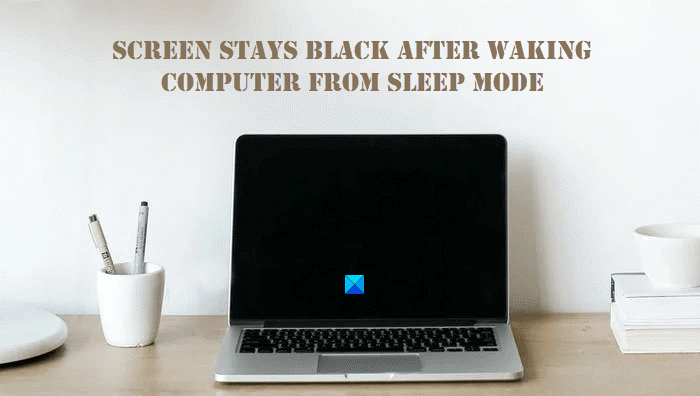
Screen stays black after waking computer from Sleep Mode
If your Monitor screen stays black after waking your Windows 11/10 computer from Sleep Mode, power down and restart your computer. Once you see your desktop, here are the things you need to take a look at:
- Check whether the device is allowed to wake the computer or not.
- Run Power Troubleshooter.
- Turn Off Fast Startup.
- Rollback the display driver.
- Uninstall and reinstall the display driver.
- Update your system BIOS.
- Run Black Screen Troubleshooter.
1] Check whether your device is allowed to wake the computer or not
Sometimes the issue is not as complicated as we think. The device (keyboard, mouse, etc.) that we use to wake the computer from sleep mode should have permission to do so. By default, this setting is enabled for the devices. But if you are getting this issue, you should check this setting.
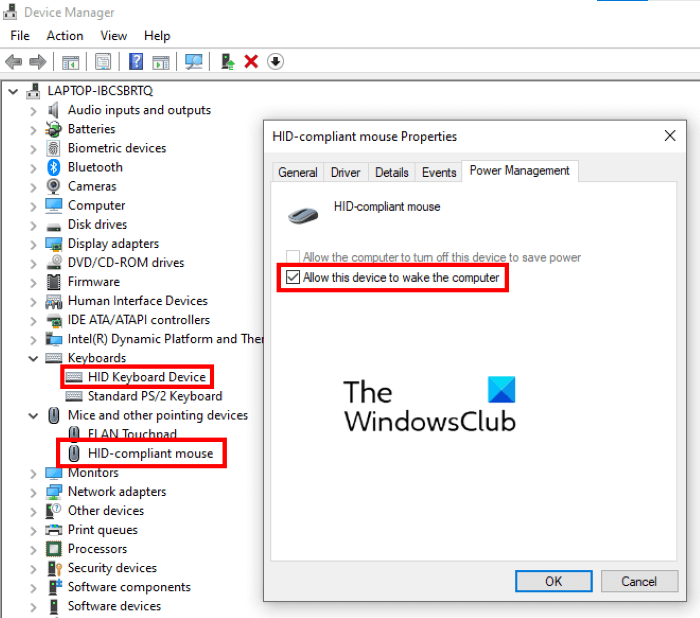
The steps to do so are as follows:
- Right-click on the Start icon or simply press Win + X keys on your keyboard.
- Click on the Device Manager to launch it.
- In the Device Manager, locate the Mice and other pointing devices node. Once you find it, expand it by clicking on the arrow icon adjacent to it.
- Now, select your mouse and right-click on it. Select Properties.
- Click on the Power Management tab.
- There, you will find an option saying Allow this device to wake the computer. If the option is not enabled by default, click on the checkbox adjacent to it. Click OK to save the changes.
The steps to enable the feature for the keyboard are the same except for the third step, in which you have to expand the Keyboards node instead of Mice and other pointing devices node.
Now, put your computer to sleep and check whether you can wake it up using your mouse or keyboard.
Read: How to wake Windows laptop from sleep with lid closed?
2] Run the Power Troubleshooter
Sometimes, a problem in the computer’s power settings can cause such types of issues. If this is the case with your computer, running the Power Troubleshooter may help.
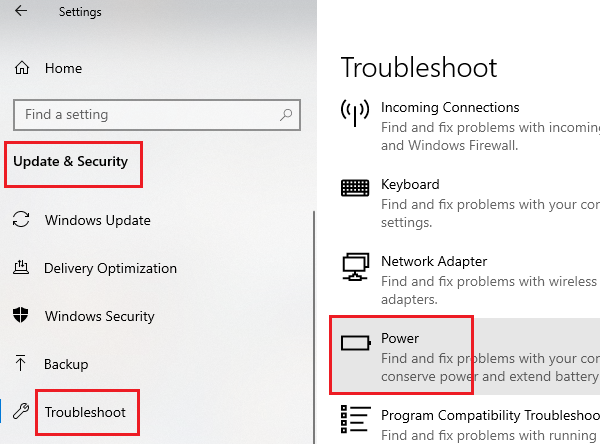
The steps to run the Power troubleshooter are listed below:
- Launch the Settings app.
- Click on the Update & Security option.
- Now, click Troubleshoot on the left side.
- You will find a link saying Additional Troubleshooters on the right side. Click on it. This will launch the Additional Troubleshooters window, where several types of Troubleshooters are available.
- Click Power. You might have to scroll down the Additional Troubleshooters list to locate it.
- Now, click on the Run the troubleshooter button.
Wait till the troubleshooting process is completed. It will fix all the issues associated with your computer’s power settings.
Read: Troubleshoot Power Plans with PowerCFG Tool.
3] Turn Off the Fast Startup
If you have tried the above two methods but the issue still persists, you can try to disable the Fast Startup.
Read: VirtualBox displays Black screen and not Booting guest OS.
4] Roll back the display driver
You can also try to roll back your display driver. Rolling back a driver uninstalls the current updated version and installs the previous version. This method is useful if you get the problem after a certain update.
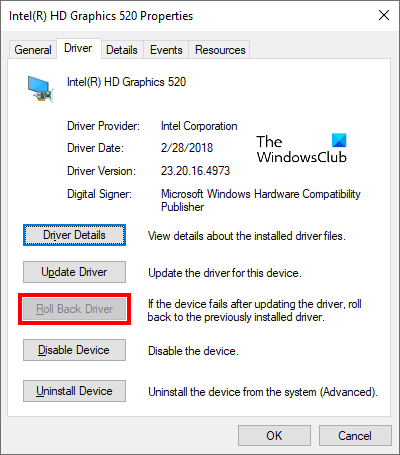
Follow the steps listed below:
- Launch the Device Manager.
- Double-click on the Display adapters node to expand it.
- Right-click on your Display driver and select Properties.
- Click on the Driver tab.
- Click on the Roll Back Driver if the option is available.
Now, check whether the issue is fixed or not.
You may press WinKey+Ctrl+Shift+B keyboard shortcuts to restart your Display driver and see if that helps.
Read: Windows PC will not wake up from Sleep Mode.
5] Uninstall and reinstall the display driver
If rolling back the display driver did not work for you or the option is not available on your computer, you can try uninstalling and reinstalling the display driver.
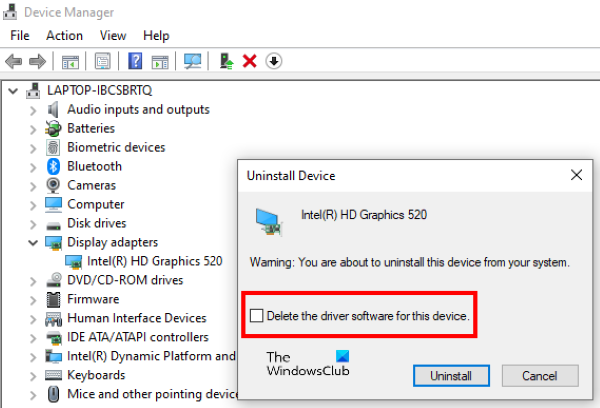
The steps written below will guide you on how to do this:
- Launch Device Manager.
- Expand the Display drivers node and right-click on your display driver. Select the Uninstall device option.
- A popup window will appear on your screen.
- Select the checkbox that says Delete the driver software for this device. After that click on the Uninstall button.
- Close the Device Manager and restart your computer.
- Now, visit your manufacturer’s website and download the latest display driver.
- Install it on your system and check if it helps.
Read: Windows crashes after waking up from Sleep.
6] Update your system BIOS
If you have tried all the troubleshooting methods listed above, but the issue is not resolved, try updating your system BIOS.
Read: Computer making Notification sounds when Sleeping
7] Run Black Screen Troubleshooter
You can also use the online Black Screen Troubleshooter from Microsoft and see if that helps.
I hope this helps.
Why is my computer not displaying after sleep mode?
If your computer isn’t displaying after sleep mode, possible reasons include an outdated or corrupted graphics driver, enabled fast startup and hibernation features, or incorrectly enabled Windows services. Updating your drivers, disabling fast startup, and reviewing system services can help resolve the issue.
What do I do if my computer turns on but the screen stays black?
If your computer turns on but the screen remains black, try rebooting in Safe Mode, checking connections, or updating display drivers. Ensure all cables are secure, and consider performing a hard reset by holding the power button. If issues persist, seek professional repair help or consult the computer manufacturer’s support for specific troubleshooting steps.
Related posts:
Leave a Reply